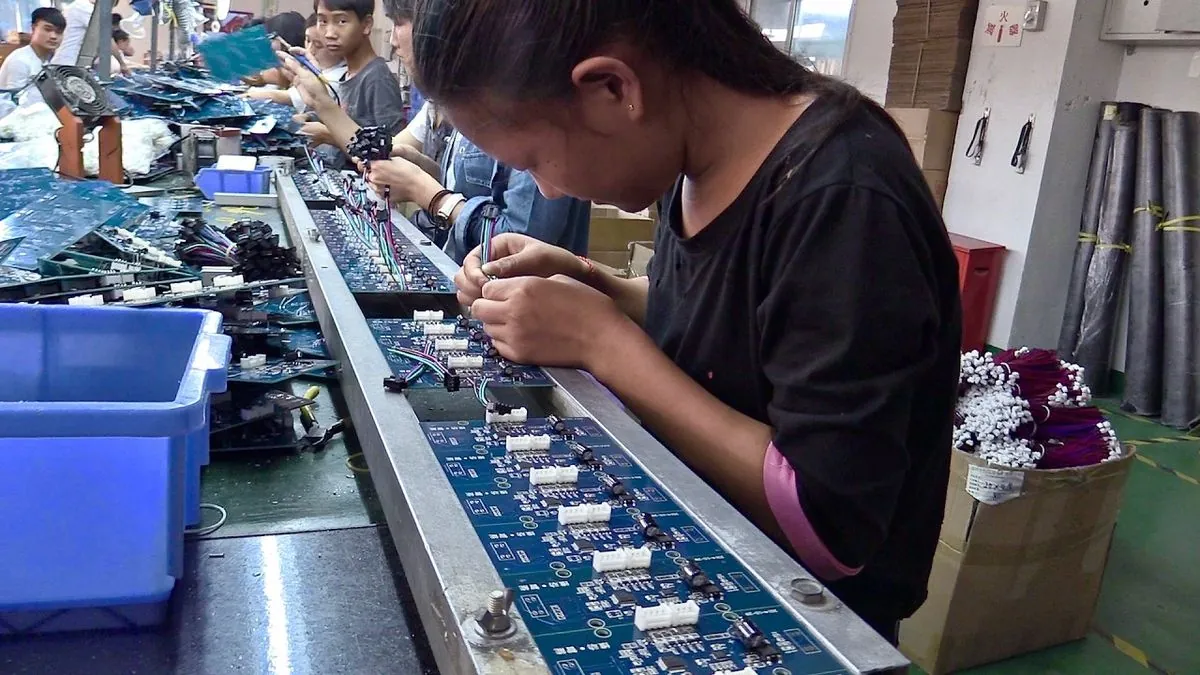China's Economic Shift: Frugality, Domestic Brands, and Global Tensions
Post-lockdown China sees a shift towards domestic brands and frugality. Economic challenges, including slow growth and trade tensions, reshape consumer behavior and industry dynamics.

In the aftermath of China's stringent zero-COVID policy, a significant transformation in consumer behavior has emerged. Herbert Lun, managing director of Wing Sang Electrical, observes a trend towards frugality and a preference for domestic brands among Chinese consumers. This shift reflects not only changing tastes but also a cautious approach to spending in the world's second-largest economy.
The economic landscape in China is undergoing substantial changes. In the second quarter of 2024, China's growth rate was 4.7%, falling short of economists' predictions. This slowdown coincides with a record £12bn outflow of foreign investment during the same period, presenting a challenge to President Xi Jinping's economic policies.

The manufacturing sector, long considered the backbone of China's economy, is facing its own set of challenges. A third of Chinese vehicle manufacturers reported losses in May 2024, highlighting the pressure on industries to maintain profitability. This situation has led to concerns about potential overproduction as companies struggle to generate sufficient cash flow.
Zongyuan Zoe Liu, a senior fellow at the Council on Foreign Relations, warns of a potential "doom loop" characterized by falling prices, factory closures, and job losses. She attributes China's economic challenges to the "four Ds": debt, demand, demographics, and decoupling from the global economy.
The job market, particularly for young professionals, has become increasingly competitive. Tina Wu, a 27-year-old PhD student in Beijing, notes the difficulty in finding well-paying jobs due to the pandemic's impact. This sentiment is echoed by Ben Cavender, managing director at China Market Research Group, who observes low consumer confidence and concerns about future job prospects.
"It's not very easy for young people to find well-paying jobs due to the impact of the pandemic. Many companies have reduced salaries."
The "Guochao" trend, or "national wave," has gained momentum among China's younger generation. This shift towards local brands reflects a growing sense of national pride and a recognition of improved quality and value offered by domestic products. The trend has been particularly noticeable since 2018, coinciding with China's rise as a global economic powerhouse.
China's economic transformation is also evident in its urban landscape. The streets of Shanghai, once filled with the noise of combustion engines, now hum with the quiet presence of electric vehicles. This change reflects China's position as the world's largest automobile market, a title it has held since 2009.
The shadow banking industry, which fueled much of China's credit growth in recent years, is facing a reckoning. Andy Xie, former Morgan Stanley chief Asia economist, notes that the era of cheap money has ended, affecting those who worked in the $3 trillion shadow banking sector. This shift is closely tied to the struggles in China's property market, which has been a significant driver of economic growth.
International tensions add another layer of complexity to China's economic outlook. Trade disputes with the United States and concerns about overcapacity in certain industries have led to increased scrutiny of Chinese exports. These challenges come at a time when China is actively pursuing its Belt and Road Initiative, announced in 2013, to enhance global trade connections.
As China navigates these economic shifts, the country's long-term growth trajectory remains uncertain. The International Monetary Fund projects that China's economic expansion may slow to just over 3% by the end of the decade. This forecast raises questions about the sustainability of China's economic model and its ability to address structural imbalances.
In conclusion, China's economic landscape is undergoing a significant transformation, characterized by changing consumer behaviors, industrial challenges, and global economic tensions. As the country adapts to these new realities, the world watches closely to see how the second-largest economy will shape its future in an increasingly complex global environment.


































